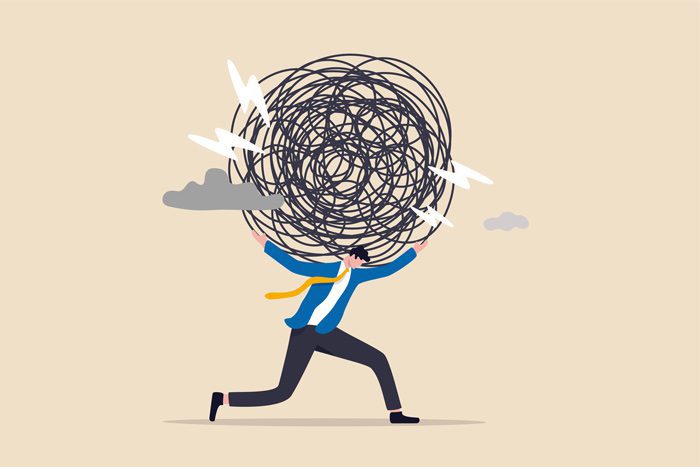As many as 40 million adults in the United States deal with anxiety disorders each year—more than 18 percent of the population. These disorders are the most common mental illnesses in the country.
All About Anxiety
But many people don’t have a clear definition of anxiety. We even tend to misuse the word quite frequently. For example, we say, “I’m anxious to hear from you” or “I’m anxious to start my vacation” when what we really mean is that we are eager to connect with someone or go on vacation.
Let’s take a look at what anxiety is, and at its various related disorders.
Anxiety & Disorders: Defining Our Terms
We are all familiar with the feeling of anxiety. We feel nervous. Our breathing rate increases. We might sweat or feel our heart pounding. These are normal reactions to a variety of situations we might face in life—including job interviews, artistic performances, asking someone on a date, taking a test, and much more. Typically, the anxious feelings end when the event causing the anxious feelings ends.
There are important differences between this perfectly normal sort of anxiety and a disorder. Individuals who are struggling with a disorder feel anxious most—or even all—of the time. The feelings of worry or fear are intense and persistent, and as a result, those feelings make it difficult to function. Even the most basic tasks can be extremely difficult for someone with a disorder.
Anxiety Disorder Symptoms
Symptoms of an anxiety disorder may include:
- Persistent feelings of nervousness, tension, or restlessness
- A persistent sense of being in danger or that everything is going to go wrong
- An increased heart rate and/or rapid breathing—including hyperventilation
- Difficulty concentrating or focusing on anything other than the persistent worries
- Avoiding places, people, or things that seem to trigger or increase the anxiety
- Sweating, trembling, and/or a sense of weakness
- Insomnia—even though the anxiety may cause a feeling of tiredness
- Stomach and other gastrointestinal issues
There are a variety of anxiety disorders—more than we can fully cover here. But let’s take a look at a few of them.
Focusing on a Range of Specific Disorders
The list of anxiety disorders includes:
- Generalized anxiety disorder: This disorder is characterized by ongoing and excessive worry about ordinary day-to-day activities. While we all worry about things from time to time, those with generalized anxiety disorder experience worry that is out of proportion to reality.
- Panic disorder: A person who experiences frequent panic attacks—sudden feelings of extreme fear or anxiety that seem to rush into the body and mind—likely are dealing with panic disorder. These attacks tend to lead to shortness of breath and a pounding heart and may even lead to chest pain that mimics (or actually is) a symptom of a heart attack. Cruelly, having a panic attack can lead to intense worry about having another panic attack.
- Social anxiety disorder: This disorder is about more than simply being an introvert. A person with social anxiety disorder feels fear or anxiety when contemplating—or experiencing—a social situation. They may feel extremely self-conscious, fearing that they are being harshly judged by those around them. As a rule, a person with disorder will avoid events or situations where they are likely to encounter others. This can lead to loneliness, isolation, and depression.
- Anxiety disorder related to substance use or misuse: Some medications and many illicit drugs can lead to the experience of persistent anxiety. It is also a frequent symptom of withdrawal from a drug. Exposure to some toxic substances can lead to feelings of anxiousness.
- Anxiety disorder related to a medical condition: A variety of medical conditions can lead to the persistent experience of anxiety. These conditions include heart disease, respiratory disorders, diabetes, irritable bowel syndrome, and chronic pain.
Don’t Feel Anxious About Getting Help
If you have the symptoms of an anxiety disorder, see a physician right away. Attempting to ignore the issue can lead to more severe problems and make treatment more difficult.
Symptoms to look for include:
- You do not seem to have the ability to control the fear or worry you are experiencing.
- Your ongoing anxiousness is interfering with school, work, relationships, or other areas of your life.
- You find yourself turning to drugs or alcohol in the hope of “self-medicating” your anxious feelings away.
- You suspect that your anxiousness may be connected to a physical health issue.
- You suspect it may be connected to another mental health disorder like depression.
- You are experiencing suicidal thoughts.
If you are having thoughts of self-harm or suicide, seek emergency treatment immediately. Do not wait to make an
appointment with your regular physician.
Keep Calm & Call Peak View Behavioral Health
If you are struggling with an anxiety disorder, it can be difficult to do the simplest things. But admitting that you need help is the first step to finding relief from the ongoing worry and fear you are experiencing.
At Peak View Behavioral Health, we can help you get that much-needed relief. Our staff members have the expertise and compassion necessary to create a personalized treatment plan that offers the strategies and resources you need to overcome these feelings and reclaim your life.
 Are you or a loved one looking for depression and anxiety treatment near Colorado Springs? For more information about Peak View Behavioral Health, or if you have questions, please call us at 719-694-0220 or use our contact form.
Are you or a loved one looking for depression and anxiety treatment near Colorado Springs? For more information about Peak View Behavioral Health, or if you have questions, please call us at 719-694-0220 or use our contact form.




